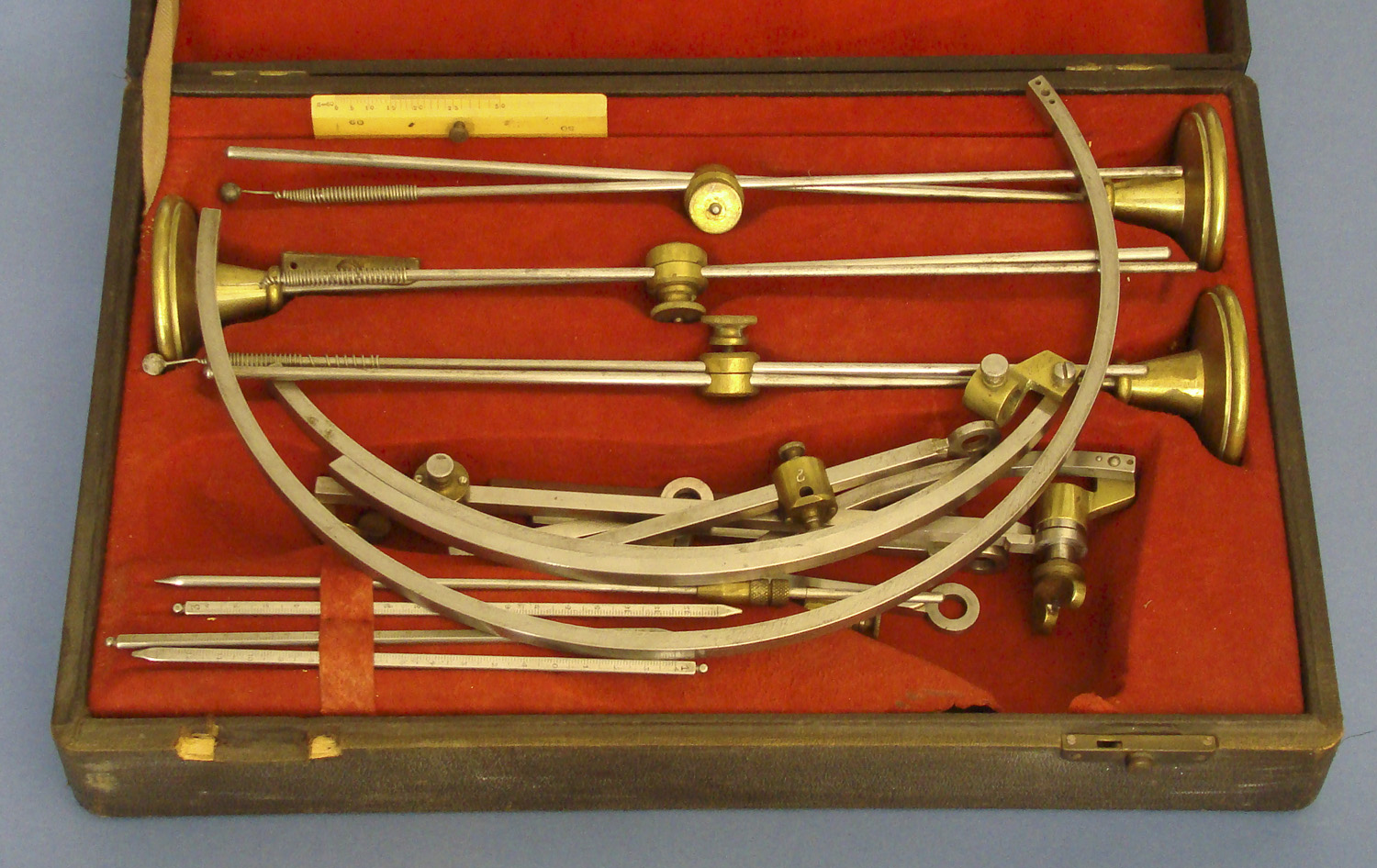Description
RARE SURGICAL BULLET EXPLORATION SYSTEM OF MAJOR HIRTZ, French, c.1915, contained in the original leatherette covered fitted case 16-1/2″ x 11-1/4″ x 3-3/4″ (42 x 28 x 9 cm), signed in gilt on the red chamois lining “Etablissements Gaiffe, Compas de Mr. le Médicin Major Hirtz pour la recherche des Projectiles.” There are numerous devices of polished steel and brass, including three standards with articulated holders for various accessory devices (three straight arms with spring-mounted balls of lead, three flat probes calibrated in millimeters, a straight probe, six straight bars, four arcuate bars, and various connectors). A boxwood rule is signed “Gaiffe a Paris.” The outfit assembles to precisely locate internal foreign bodies, used in association with early X-ray equipment. Condition is fine throughout.
The inventor of this forerunner of modern stereotaxic instrumentation was Major Eugène-Jules Hirtz (1869-1936), who saw medical service in Algeria and in World War I. He developed the French Army’s first physiotherapy service, organized the Army’s radiologic services, set up a central service of electro-radiology and a school for X-ray technicians (directed by Madame Curie!), and held, from 1920 to 1928, the chair of radiology-electrology-physiotherapy at the Ecole d’application du Val de Grâce. The maker was the firm A. Gaiffe of Paris, specialists in electro-medical and X-ray apparatus. We note Gaiffe catalogues on record covering the years 1874 to 1911.
A remarkable outfit.
Ask the Dealer
Dealer information
 TESSERACT
TESSERACT
David and Yola Coffeen both have enjoyed academic careers, as planetary astronomer and as linguist/educator. But since 1982 (yes, 1982!) they have been full-time dealers in early scientific and medical instruments, under the name Tesseract. Selling primarily by catalogue (over 100 issued so far) they also have a web presence at www.etesseract.com, and can be contacted at [email protected].









